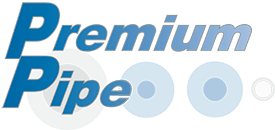https://hbr.org/2018/07/how-ai-is-changing-sales
Companies are using AI in all kinds of innovative ways to advance their businesses. If you’ve ever searched Netflix to watch a movie, AI (a recommendation algorithm) was no doubt used in your decision about what to watch. If you’ve shopped on Amazon, your decision about what to buy was also influenced by AI (via an association algorithm). If you’ve ever ordered an Uber, AI (a location algorithm) was used to have a car in your vicinity quickly. If you ever had a thought about a product or a vacation, and it seemed to suddenly pop up on your search page or in your email inbox, I can assure you it was based on AI (a classification algorithm) monitoring your online activity.
These same types of AI algorithms can be used to power any company’s decision-making process, helping you make better business predictions. Based on research for my book Sales Ex Machina: How Artificial Intelligence is Changing the World of Selling, here are five specific areas where AI algorithms can be leveraged to help your business grow by helping your sales team sell more:
Price Optimization: Knowing what discount, if any, to give a client is always a tricky situation. You want to win the deal, but at the same time you don’t want to leave money on the table. Today, an AI algorithm could tell you what the ideal discount rate should be for a proposal to ensure that you’re most likely to win the deal by looking at specific features of each past deal that was won or lost. Features could include: size of the deal in terms of dollar amount, product specification compliance, number of competitors, company size, territory/region, client’s industry, client’s annual revenues, public or private company, level of decision-makers (influencers) involved, timing (e.g., Q2 vs Q4), new or existing client, etc.
Forecasting: Sales managers face the daunting challenge of trying to predict where their team’s total sales numbers will fall each quarter. Using an AI algorithm, managers are now able to predict with a high degree of accuracy next quarter’s revenue, which in turn would help a company, from an operations standpoint, to better manage inventory and resources.
Upselling and Cross-Selling: The fastest and most economical way to grow your top-line revenue is to sell more to your existing client base. But the million dollar question is, who is more likely to buy more? You can spend a lot of money on marketing to those who won’t buy, or you can use an AI algorithm to help identify which of your existing clients are more likely to buy a better version of what they currently own (up-sell) and/or which are most likely to want a new product offering altogether (cross-sell). The net effect is an increase in revenue and a drop in marketing costs.
Lead Scoring: A salesperson with a rich pipeline of qualified potential clients has to make decisions on a daily, or even hourly, basis as to where to focus their time when it comes to closing deals to hit their monthly or quarterly quota. Often, this decision-making process is based on gut instinct and incomplete information. With AI, the algorithm can compile historical information about a client, along with social media postings and the salesperson’s customer interaction history (e.g., emails sent, voicemails left, text messages sent, etc.) and rank the opportunities or leads in the pipeline according to their chances of closing successfully.
Managing for Performance: Every month, sales managers have to assess the revenue pipelines of each of their salespeople with an eye towards nurturing deals that might stall, or worse, fall through. Using AI, sales managers can now use dashboards to visually see which salespeople are likely to hit their quotas along with which outstanding deals stand a good chance of being closed. This will allow a manager to focus their attention on key salespeople and associated deals that will help the company hit their quota.
In each of the five examples above, the quantity of gathered data used will increase the algorithm’s ability to give a more accurate prediction, which in turn will drive behavior. This is key. The value of any prediction lies in how it can be used to guide a salesperson’s or manager’s behavior to improve the company’s bottom line.
If you choose to harness the power of AI on your own sales team, where do you begin?
First, identify the different types of data sets that exist within a company that can be combined to give a more complete picture of the customer base. For example, the sales department obviously has historical purchase data, and the marketing department has website analytics and data from promotional campaigns (e.g., response rates from clients). Combining these data sets can allow an AI algorithm to make better predictions about who is more likely to respond to an offer.
These data sets then need to be combined with a Customer Relationship Management (CRM) platform (e.g., Saleforce.com, Microsoft 365, Zoho, and many others) which will serve as a repository for all customer transactions and interactions. These CRM platforms have tools that will allow you to analyze the data sets for patterns, and generate the types of predictions mentioned in the five examples above. (More and more CRM companies are adding “intelligence” as part of their platform options. For example, Salesforce.com now has an AppExchange where you can purchase AI plug-ins like InsideSales.com’s Neuralytics to record, store, and analyze phone calls.)
The challenge for any company is always finding new ways to grow their revenue, reduce costs, and expand market share, while at the same time minimizing risks. It’s become apparent to leading edge companies that leveraging their existing internal database, and mining it for new opportunities using AI, will allow them do to so prudently. If data is indeed the new oil, then companies who can capture the data, analyze it, and generate actionable insights will have salespeople who’ll be able to close more deals, more often.

